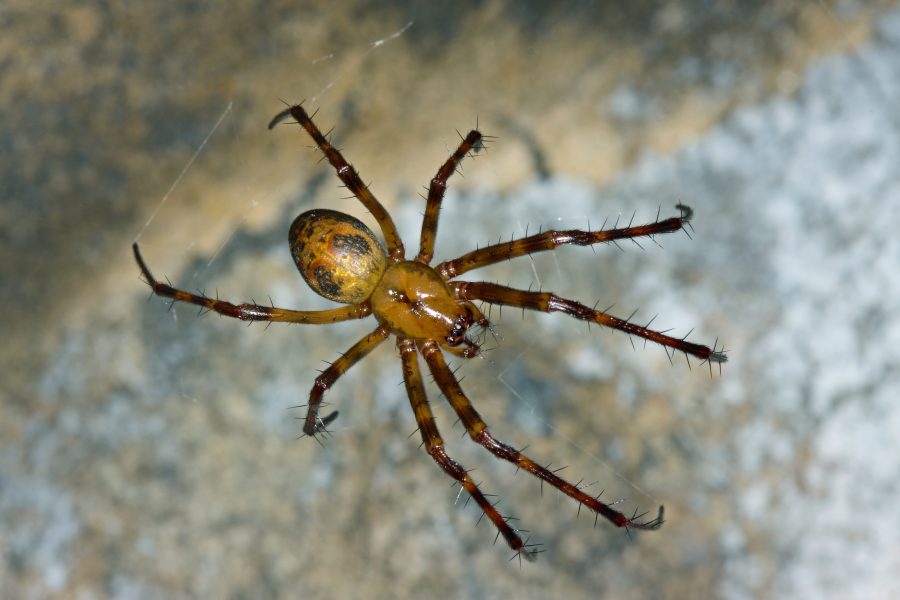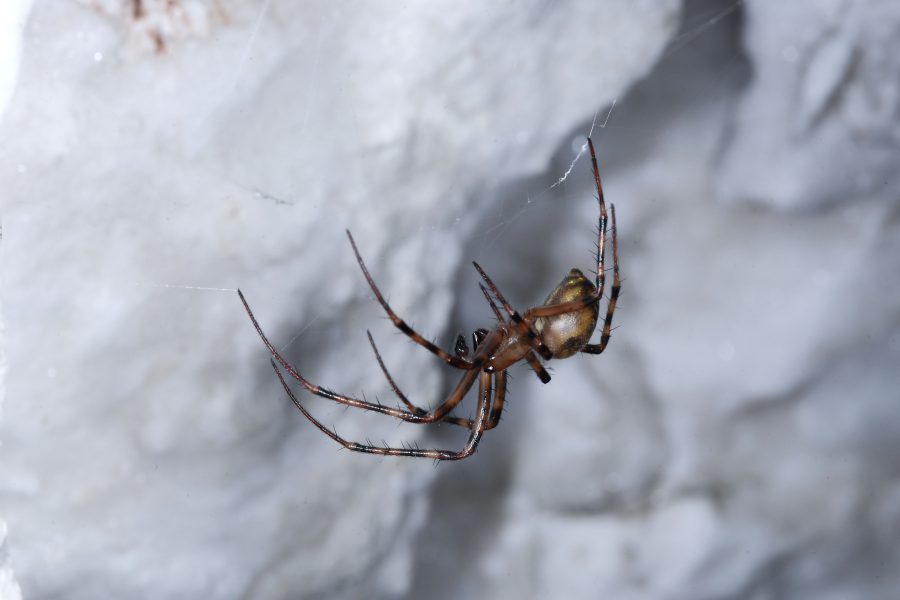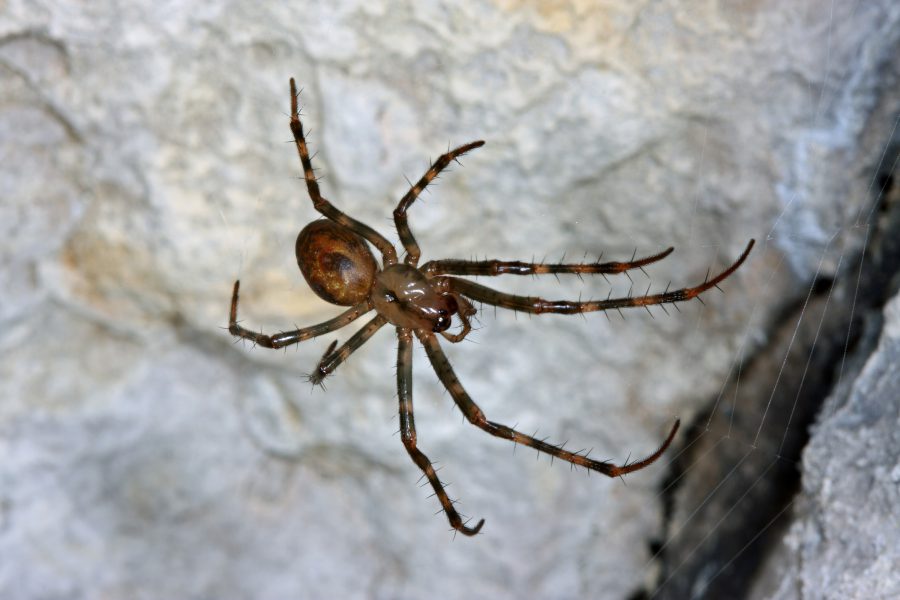
Greater Cave Spider - Cave Animal of the Year 2012
Introduction
The Greater Cave Spider Meta menardi (also named “Cave Cross Spider”, although it doesn't belong to the family orb-weaving spiders like the Cross Spiders) belongs to the family of long-jawed orb-weavers (Tetragnathidae). For its sheer size, it is one of the most conspicuous inhabitants of caves in our latitude. The animals are living all year round in natural caves, mine tunnels and rock cellars. For this reason, the spider has been chosen as the Cave Animal of the Year 2012. This spider represents a large number of species, which are depending on caves as sheltered and frost-free refuges. The Verband der deutschen Höhlen- und Karstforscher e.V. (German Speleological Society) has chosen the Cave Animal of the Year to point out the immense deficiencies in the research of subterranean ecosystems and their associated faunas.
At the same time, the Greater Cave Spider was elected as „European Spider of the Year 2012“. This illustrates the close cooperation between biospeleologists and the specialists for the species, which are living in caves. The researchers in spiders (arachnologists) depend on technical know-how and knowledge of localities of the cave researchers (speleologists), to gain insights in the life of their species in their subterranean habitats.
Description
The body length of the Greater Cave Spider is 11 to 13 mm in the male, and 14 to 17 mm in the females. The spiders inhabit caves, cellars, mining tunnels and the interior of scree slopes, as long as the humidity is in the mid-range, and the temperatures are constant and above 7° C. Caves with too high a humidity are avoided.
The copulation of the spiders usually takes place in early summer. Between mid July and beginning of August, the female constructs a cocoon, which measures 2 to 3 cm and is suspended by a thread. The cocoon shelters 200 to 300 eggs, which are guarded by the female until it dies, in 2 to 3 months. Around end of August, the eggs disintegrate, and the spiderlings are visible as black dots in the egg cocoon. The spiderlings are leaving the cocoon only in spring. They are wandering to the cave entrance, where they stay for a few days to weeks. One part of the spiderlings are moving from there to other caves, the remainders stay in the cave of their origin. This way both, dispersal and continuation of the original population are secured. The Greater Cave Spider Meta menardi may reach an age of 2 to 3 years, in contrast to most of the native spiders, which usually live for only one year.
The net of the Greater Cave Spider, 20 to 30 cm in diameter, has to be regarded as rudimentary. It is rarely used to catch prey. Meta menardi sits predominantly in the proximity of the cave wall, where it preys on woodlice, millipedes, overwintering moths and butterflies and other small animals. Captured prey is often suspended on short threads in the net. This hunting behaviour without the use of the net originally intended for the capture of prey can be regarded as a genetically fixed, behavioural adaption to cave life.
Distribution
The Greater Cave Spider Meta menardi has a wide geographic distribution. It inhabits subterranean cavities in the whole Palaearctic with the exception of Japan. In Central Europa, the spider is found mainly in mountainous areas, especially in the large karst areas like the Swabian or Frankonian Alps. Outside of the palaearctic area,there are cave records from Northern America and from Madagascar. These are probably the result of accidental transport by humans.




